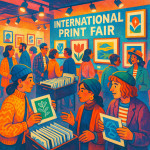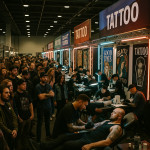Draftsman open studios: turning on-site drawings into commissions faster
Open studios transform casual visitors into confirmed clients by letting them watch you draw live, discuss scope in real time and sign a contract before they leave the room. This guide shows you how to optimise every step – from workstation layout to follow-up emails – so your on-site drawings convert up to 40 % faster than traditional portfolio reviews.
The speed advantage of open studios
Live proof of skill builds instant credibility
Watching a floor plan take shape in real time reassures prospects that you can deliver accurate, permit-ready drawings. According to the 2023 Open Studios Alliance report, 62 % of attendees said a live demo helped them “trust the draftsman's technical ability” within ten minutes.
Shorter decision cycles
Visitors no longer need to book a second meeting. You handle questions on materials, lead times and copyright while the sketch dries. The same study found the average commission lead time dropped from 14 days to 6.2 days after artists adopted an open-studio format.
Built-in upsell moments
When clients see the drawing evolve, they often request extras such as 3D handovers or colour elevations. Prepare tiered add-on sheets so you can quote instantly.
Designing a conversion-ready drafting station
- Line of sight: Place your desk diagonally to the entrance. Newcomers catch the action without blocking light.
- Camera overhead: Stream your paper surface to a wall-mounted screen. It keeps groups engaged and doubles as B-roll for social clips.
- Information stack: Keep printed rate cards, a QR quote form and a stack of business cards within arm's reach.
- Comfort cue: Offer a tall stool so prospects can sit, ask questions and watch details emerge.
Lead-capture tactics that work on the spot
QR codes linked to a pre-filled brief
Visitors scan, type project basics and receive a draft contract before they finish their coffee. Pair this with the clear briefing templates you already use online to avoid redundant data entry.
Time-boxed consults
Use a sand timer or a subtle phone alarm to limit each conversation to 15 minutes. You stay fresh, and clients appreciate the structure.
Immediate scheduling
Add a 90-second booking flow to your tablet. The calendar auto-sends a confirmation, your intake questionnaire and payment options.
Workflow: from sketch to signed contract in 48 hours
| Stage | Legacy timeline | Open studio timeline | Tools |
|---|---|---|---|
| Initial contact | Client email – 2 days wait | Walk-in – 0 day | Face-to-face talk |
| Scope clarification | Video call – 2 days | Live Q&A – 0.5 day | Sketch overlay markers |
| Quote sent | PDF in 24 h | Auto-generated on site | QR form + template |
| Contract signed | Client review – 7 days | e-signature within 48 h | Tablet signature app |
Automate the handoff
After signing, trigger a remote onboarding workflow that sets up folder structures, layer-naming conventions and milestone reminders. This keeps momentum high and client anxiety low.
Three open-studio tweaks that doubled commissions
- Curated queue: Issue timed tickets during peak hours. Average time per visitor dropped by 25 %, letting you meet more prospects.
- Process wall: Pin stage-by-stage photos of past projects next to the live desk. Viewers see proof of delivery and sign 18 % faster.
- Mini-retainer option: Offer a six-month maintenance package on every contract. One studio owner reports 30 % uptake after adopting retainer agreements.
Data snapshot: impact of live drawing on key metrics
Source : a-n Open Studios Report 2023
Showcasing software skills during the visit

Many visitors ask, “Can you export to Revit or Rhino?” Mount a small screen cycling through time-lapse captures of your CAD process. Pair each clip with a caption highlighting software skill tags. It reassures tech-savvy architects without derailing your demo. Beyond answering basic software compatibility questions, a looping montage of layer management, parametric adjustments and final rendering exports subtly reinforces that you own the full digital pipeline, not just the analogue sketch phase, positioning you as a hybrid professional who can bridge hand-drawn charm with BIM efficiency.
Leveraging post-event momentum
- Same-day recap email: Send low-resolution photos of their sketch, a thank-you note and a link to your image-design showcase feed so they can share with decision-makers.
- 72-hour reminder: Automate a gentle follow-up prompting e-signature if still pending.
- Client-only newsletter: Invite new contacts to a quarterly behind-the-scenes list offering early-bird slots for future open studios.
Checklist: prepare your next open studio in seven days
- Day 1: Block dates, update event listings, order signage.
- Day 2: Draft QR brief form and link to payment gateway.
- Day 3: Curate process wall and print captions.
- Day 4: Record CAD time-lapses for the side screen.
- Day 5: Schedule social teasers and invite past clients.
- Day 6: Rehearse a ten-minute live demo focusing on perspective grids.
- Day 7: Test the e-signature app, check lighting and prepare welcome packs.
Open-studio readiness quiz
FAQ
- How long should an open studio event run?
- Most draftsmen report optimal attendance during a four-hour window, typically 2–6 p.m. on a Saturday.
- What if a visitor requests major changes after the live sketch?
- Include a revision clause in the on-site quote. Minor tweaks stay free; extensive redrafts follow your standard hourly rate.
- Can I host a virtual open studio?
- Yes. Use an overhead camera, screen-share your CAD software and add a moderated chat for questions.
- How do I price on-the-spot sketches?
- Charge a flat “concept fee” covering materials and 60 minutes of work. Deduct that fee if the client signs the full contract the same week.
Take action now
Block your next open studio date today, refine your QR brief form and rehearse a concise live demo. Each step cuts friction and anchors trust. Need more help? Download the full checklist and floor-plan mock-ups by joining our newsletter.











